
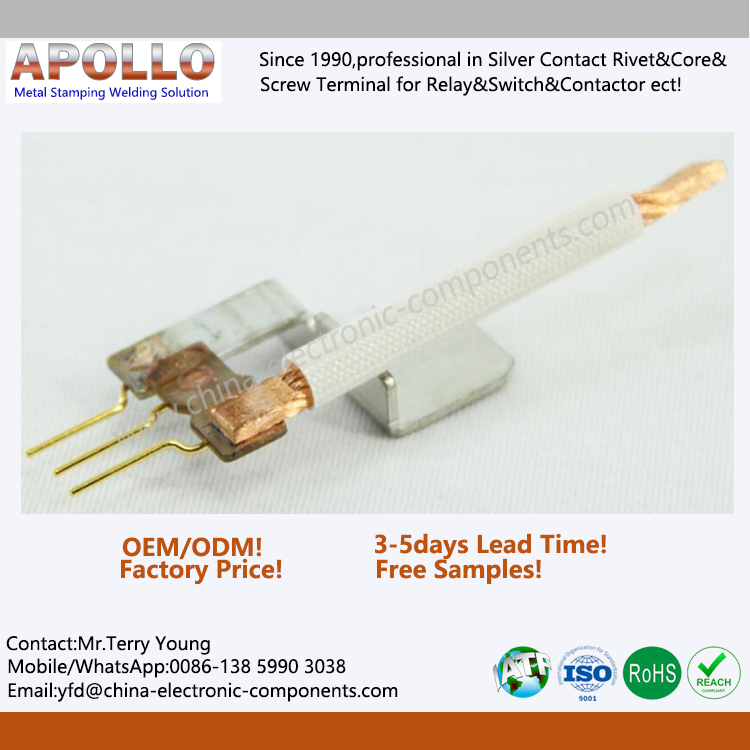
1-Product: 6J13 Manganese Copper Shunt for Magnetic Latching Relay
2-Material: T2Y2 Pure Copper+Manganese Copper+Copper Terminal (if need)
3-Resistance value tolerance: ± 5%
4-Process: EBW(Electron beam welding),Stamping,Spot Welding
5-Aging: 10 hours under 120 deg
6-Power loss: <50 milli watt
7-Termination: Integrated lead wires are available
8-Application: Work in all kinds of electrical meter as power measurer,like Prepayment Energy Meter,AMR System,Automatic Control System,Compound Switch etc.
9-Customized designs are available against customer's Latching Relay Manganin Shunt drawings/samples.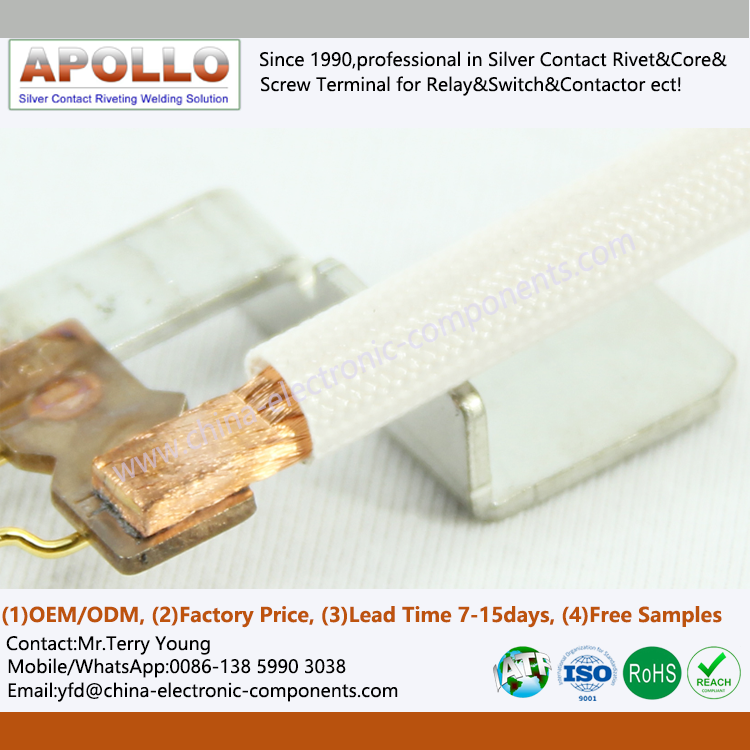
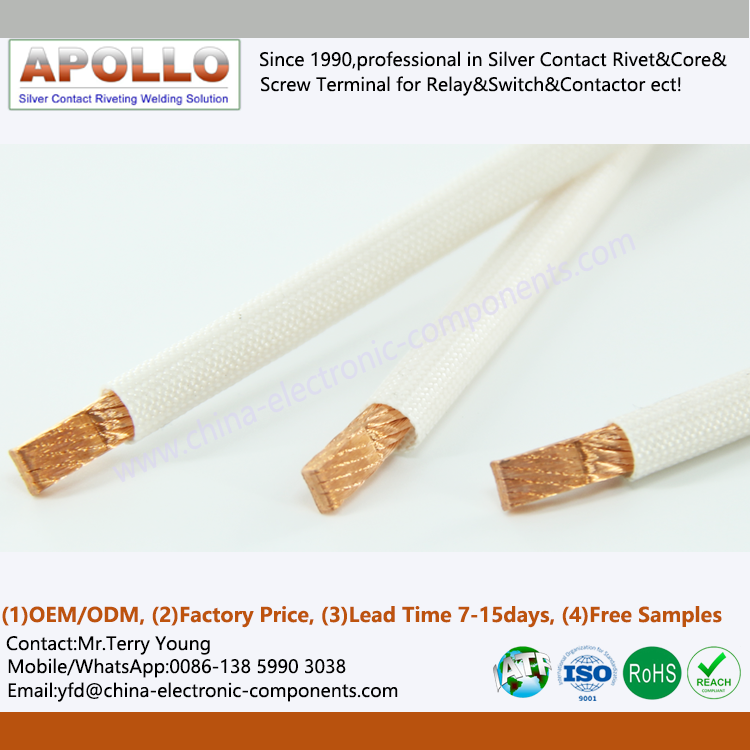
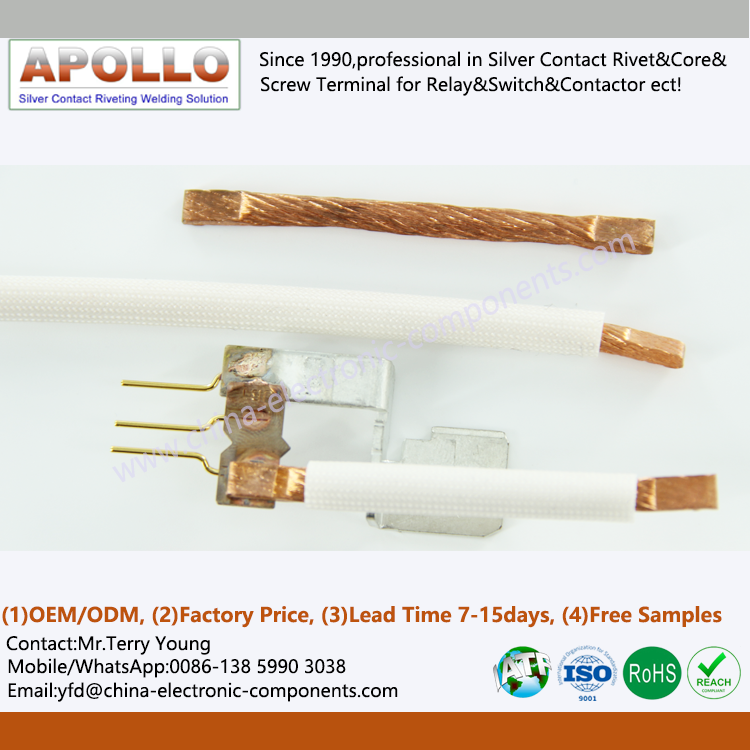

Product features of Manganese Copper Shunts
1-Ambient temperature: -20~80°C. 1.2 Relative humidity: up to 95%, 40°C.
2-Insulation resistance: At room temperature, the insulation resistance of the sampling wire and heat shrinkable sleeve used in the product E-beam Welding Shunt is not less than 100MΩ; after undergoing the steady-state thermal test, the insulation resistance is not less than 1MΩ.
3-Medium withstand voltage: Under normal conditions, the sampling line and heat shrinkable tube used in the product EBW (Electron Beam Welding) Manganin Shunt should be able to withstand the medium withstand voltage of 500VAC (AC RMS) for 1 minute, and there should be no breakdown, arcing and flashover.
4-Temperature coefficient: 0.4×10-6/°C
5-Temperature rise: When the rated maximum current is applied to the product Manganese Copper Shunts, the temperature rise should not exceed 60°C.
6-Welding strength: The welding strength of the connecting piece and Spot Welding for Manganin Shunt Resistor should be able to withstand the destructive inspection of bending the connecting piece with a force of 200N. At this time, the welding surface should not be de-soldered or cracked; the welding strength of the sampling line should be able to withstand 50N Tensile test, no desoldering or disconnection for the Electric Meters Manganin Shunt.
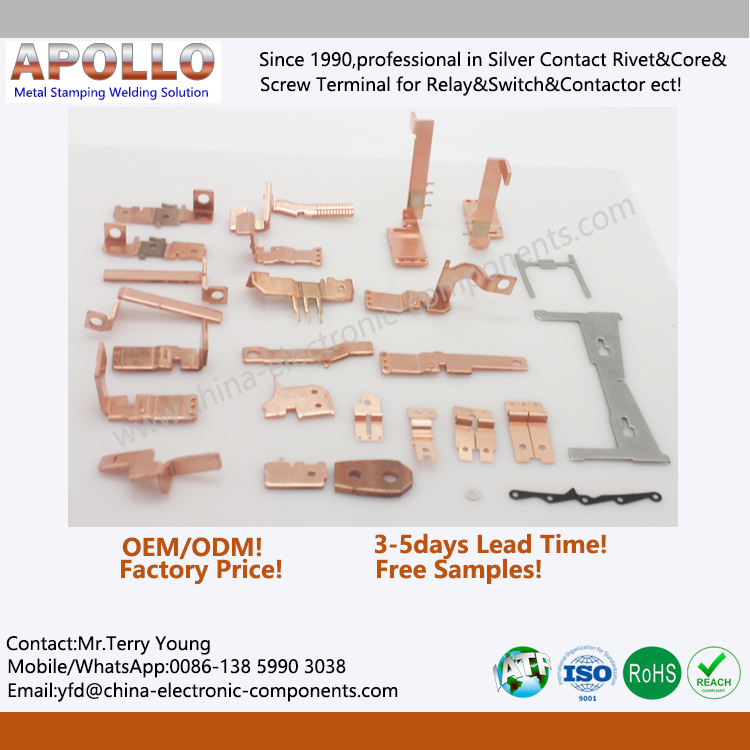
Characteristics of Electron Beam Welding of Manganese Copper Shunts of Magnetic Latching Relays
1) The energy density of electron beam welding is high, and it can weld welds that are difficult to achieve by ordinary arc welding;
2) Electron beam welding is carried out in vacuum, the chemical composition of the weld is stable and pure, the joint strength is high, and the weld quality is high;
3) The electron beam welding speed is fast, the heat affected zone is small, and the welding thermal deformation is small;
4) Electron beam welding is suitable for welding almost all metal materials, especially for Copper Alloy Shunt and aluminum welding;
5) Electron beam welding can obtain welds with a large aspect ratio (20: 1 ~ 50: 1), and when welding thick parts, it can be formed at one time without opening the groove;
6) Electron beam welding combines computer technology to achieve precise control of process parameters and fully automate the welding process.
Electron beam welding technology is currently the fastest growing and most widely used electron beam technology.
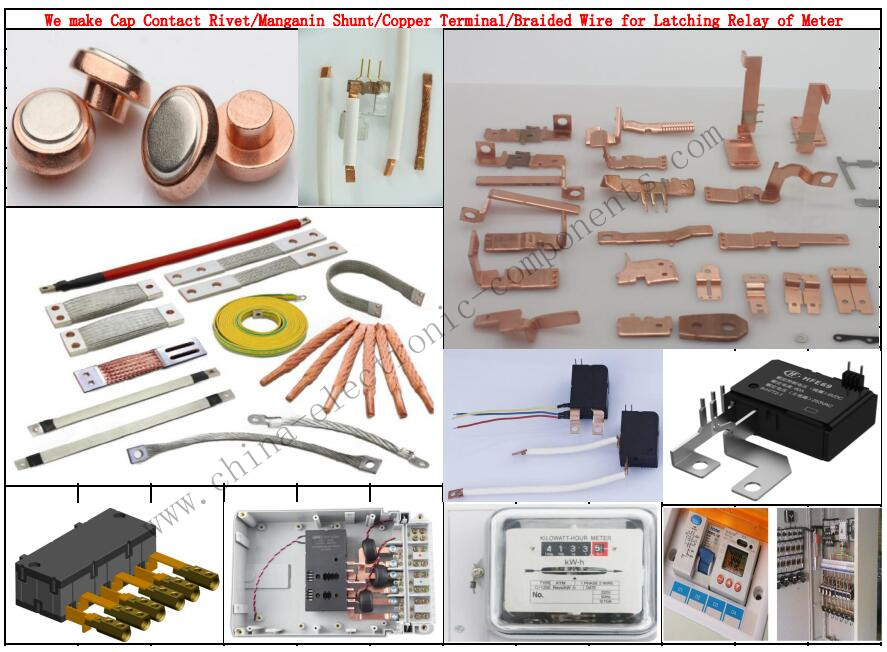
The structure of the Magnetic Latching Relay
The magnetic latching relay is divided into two layers, the upper layer is the electromagnetic system, and the lower layer is the Silver Electric Contact system. The electromagnetic system adopts a flat direct-acting magnetic latching magnetic circuit system, which includes a Terminal Block Manganin Shunt, a coil, an Electrician pure iron armature, an Electrician pure iron core, and a mounting plate. The Prepayment Meter Shunts are located on the mounting plate. In the center, coils are installed on both sides of the Cable Wire Shunt Resistor, a U-shaped iron core is arranged above the coil, and the armature is positioned between the iron cores to form an annular structure, which can be controlled by a Primary Wire Manganin Shunt field. Both ends of the mounting plate are located beside the U-shaped bottom of the iron core, and a pure iron plate is also installed to prevent the interference of external Braze Welding Shunt Resistance fields (for Energy Meter ).
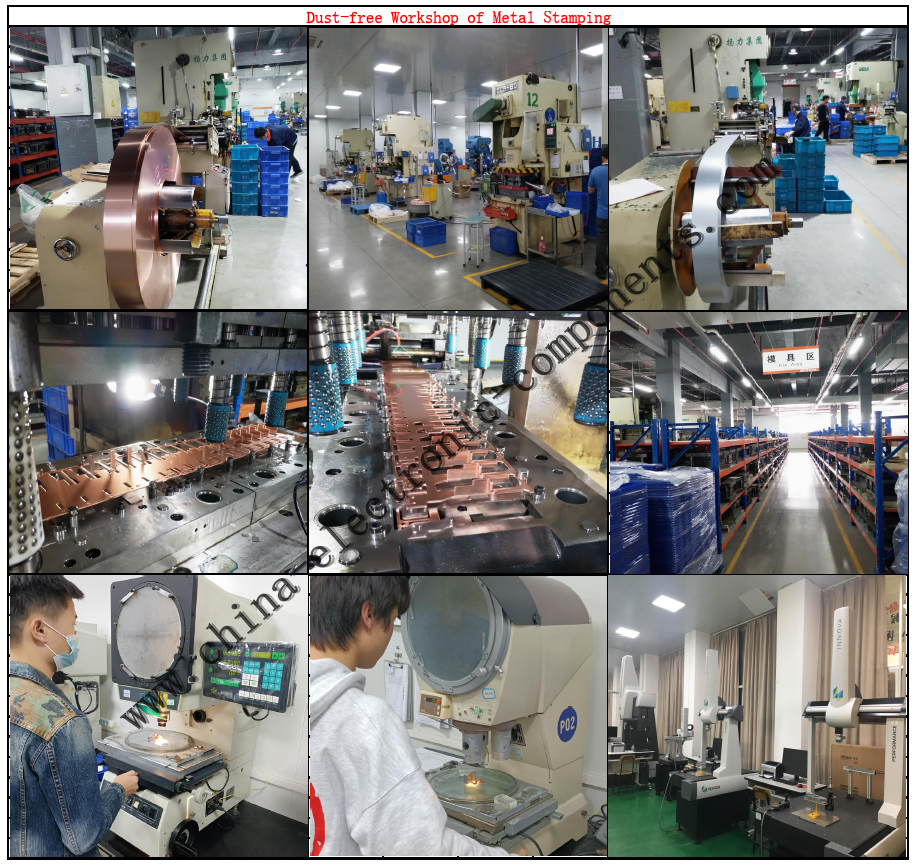
Application Notes for Magnetic Latching Relays
1. The factory state of the holding relay is usually the Electrical Silver Contact closed state, but the state may be changed due to factors such as impact during transportation or installation of the relay. Therefore, it is necessary to take measures to reset the Bimetal Electronic Contacts before use.
2. In order to make the magnetic latching relay operate reliably, the voltage applied to the coil must reach the rated voltage value, and the pulse width must reach more than 3 times the operating time.
3. The magnetic latching relay coil is polarized, and the customer must specify the coil polarity when ordering, so that I can produce it.
4. The shape and installation size of the holding relay cannot be changed in general. Customers should pay attention to whether the shape and size of the relay meet the requirements when selecting models. The peripheral accessories of the magnetic latching relay can be customized according to customer requirements. For double hard-connected products, there must be one side of the lead-out conductive sheet that is relatively flexible; if both sides are rigid, it is easy to generate large stress after the relay is installed, which may change the parameters of the relay.
5.The Manganin Shunt Latching Relay should be handled with care when entering the factory for inspection and installation to prevent falling to affect the parameters; products for destructive testing should be strictly distinguished from normal products and should not be used.

Contact Information:
Mr.Terry Young (Sales Manager)
Apollo Electronic Components (Xiamen) Co.,Ltd
Xiamen Apollo Stamping Welding Technology Co., Ltd
Add:225#,Jinshang Road,Huli District,Xiamen City,Fujian Province,China,361009
Tel&Fax: 0592-5765084, Mob/WhatsApp/WeChat: 0086-13859903038 ,QQ: 1260358661
Email: yfd@china-electronic-components.com
Web: www.china-electronic-components.com , www.stamping-welding.com
Since 1990,professional in Silver Contact Rivet&Core&Screw Terminal for Relay&Switch&Contactor ect Stamping&Welding solutions !